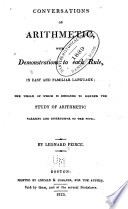 | Leonard Pierce - Arithmetic - 1823 - 170 pages
...always known. You can always reduce a decimal to a vulgar fraction, by placing, for its denominator, a unit with as many ciphers annexed as there are figures in the decimal expression. That you may be able to enunciate, or reduce to language, numbers with decimal expressions,... | |
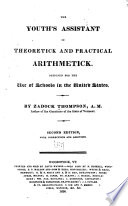 | Zadock Thompson - Arithmetic - 1826 - 176 pages
...any number whatever, but the denominator of the latter, when expressed, is always 10, 100, 1000, or 1 with as many ciphers annexed as there are figures in the decimal. The least common multiple is the least number, which can be so divided without a remainder. Jl prime... | |
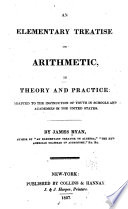 | James Ryan - Arithmetic - 1827 - 290 pages
...&c. Hence, conversely : 116. The denominator of a decimal, thus expressed, is the number denoted by a unit with as many Ciphers annexed, as there are figures in the given number. Thus, .'37 is TW ; '004 is ToW '00083, TTFff ^ &C. 117. From this notation it is evident,... | |
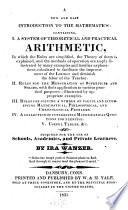 | Ira Wanzer - Arithmetic - 1831 - 408 pages
...be expressed in the form of a common fraction by writing under it its proper denominator, ('viz. a unit with as many ciphers annexed as there are figures in the given decimal, ) rejecting from the numerator the decimal point, and also the ciphers, if any, to the... | |
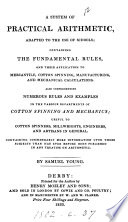 | Samuel YOUNG (of Manchester.) - 1833 - 272 pages
...PROBLEM II. To reduce a decimal to a vulgar fraction. — The given decimal will be the Numerator; and a unit, with as many ciphers annexed as there are figures in the decimal, will be the Denominator of the required fraction, which reduce to its lowest terms. (1) Reduce '5 to... | |
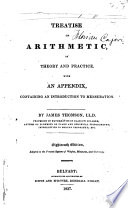 | James Thomson (LL.D.) - Arithmetic - 1837 - 296 pages
...divide by a number expressed by any number of 9's : Divide the dividend by the number expressed by a unit, with as many ciphers annexed as there are figures in the divisor, divide the quotient thus found by the same number, and thus proceed as long as possible; then... | |
 | Luther Ainsworth - Arithmetic - 1837 - 298 pages
...What, then, will always be the denominator of a decimal fraction ? A. It will always be an unit or 1, with as many ciphers annexed, as there are figures in the decimal expression. Q. From what do decimal fractions arise, and how are they produced ? A. They, like all... | |
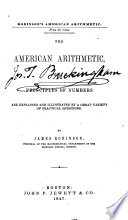 | James Robinson (of Boston.) - 1847 - 304 pages
...the numerator is the ordinal number of its denominator, and the denominator is always known to be a unit with as many ciphers annexed as there are figures in the numerator. Since the numerator expresses the number of parts, and the ordinal number of its denominator... | |
 | Andrew Carrick (accountant.) - Ready-reckoners - 1856 - 34 pages
...fraction, as already stated, by making the figures in the decimal a numerator; the denominator being 1, with as many ciphers annexed as there are figures in the decimal. The common fraction may be reduced to lower terms, by dividing both terms by any number which divides... | |
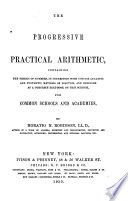 | Horatio Nelson Robinson - Arithmetic - 1859 - 348 pages
...same as whole number* 5. The denominator of a decimal, though never expressed, is always the unit, 1, with as many ciphers annexed as there are figures in the decimal. 6. To read decimals requires two numerations ; first, from units, to find the name of the denominator,... | |
| |